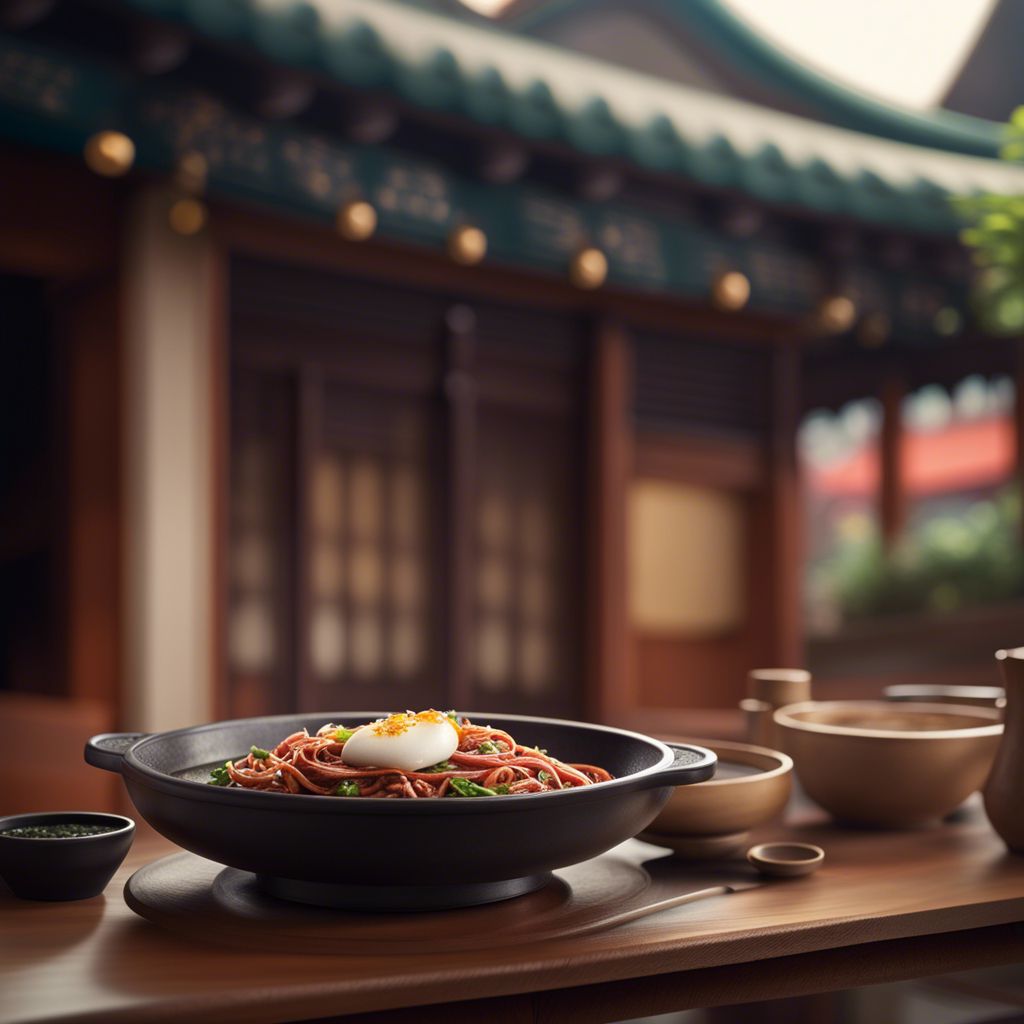
Cuisine
Korean cuisine
Korean cuisine is characterized by its use of bold flavors, such as garlic, ginger, and chili peppers. It is also known for its use of fermented ingredients, such as kimchi, which is a spicy pickled vegetable dish. Korean cuisine is generally considered to be healthy, as it is low in fat and high in nutrients. It is also known for its emphasis on vegetables and rice.
Typical ingredients
Rice, Vegetables (such as cabbage, spinach, bean sprouts), Beef, Pork, Chicken, Seafood, Tofu, Garlic, Ginger, Chili peppers, Soy sauce, Sesame oil, Doenjang (fermented soybean paste), Gochujang (fermented chili paste), Kimchi (spicy pickled vegetables),
Presentation and garnishing
Korean cuisine is often presented in small, colorful dishes, which are meant to be shared. It is also often garnished with local ingredients, such as sesame seeds or scallions.
Korean cuisine is known for its use of bold flavors, such as garlic, ginger, and chili peppers. It is also known for its emphasis on vegetables and rice.
More cuisines from this region...
History
Korean cuisine has a long history, dating back to the Three Kingdoms period, which lasted from the 1st century BC to the 7th century AD. During this time, the kingdoms of Goguryeo, Baekje, and Silla developed their own unique cultures, which included their own cuisines. Korean cuisine was heavily influenced by Chinese cuisine, as Korea had close trade ties with China. After the Three Kingdoms period, Korean cuisine continued to evolve, incorporating Japanese and Western ingredients and cooking techniques.
Cultural significance
Korean cuisine is an important part of Korean culture, and is often served at festivals and other special occasions. It is also popular among tourists, who come to Korea to experience the unique culture and cuisine. Korean cuisine is also known for its health benefits, as it is low in fat and high in nutrients. It is believed to be one of the reasons why Koreans have one of the lowest obesity rates in the world.
Health benefits and considerations
Korean cuisine is believed to have many health benefits, including reducing the risk of heart disease, cancer, and diabetes. It is also believed to promote longevity.
Korean cuisine dishes Browse all »

Galmaegisal
Galmaegisal (pork dish)
Galmaegisal is a Korean dish made with grilled pork skirt steak.

Hongeojjim
Spicy Skate Stew
Hongeojjim is a Korean dish made with skate fish that is marinated and steamed. It is a popular dish in Korean cuisine and is known for its tender and flavorful meat.
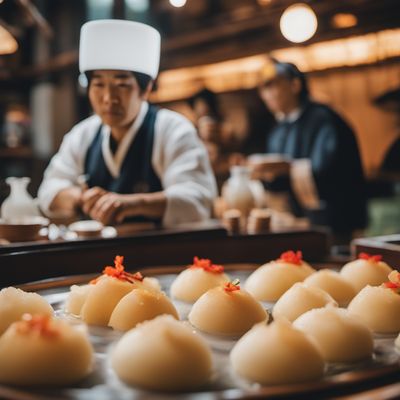
Gyeongdan
Gyeongdan are a type of Korean rice cake made with glutinous rice flour and filled with sweet bean paste. They are often served as a dessert or snack.

Doenjang jjigae
Soybean Paste Stew
Doenjang jjigae is a traditional Korean soup made with fermented soybean paste, vegetables, and meat or seafood. It is a staple in Korean cuisine and is often served as a main dish.

Baji
Baji is a popular Indian snack that is crispy on the outside and soft on the inside. It is made with gram flour, spices, and vegetables. This dish is perfect for a quick snack...

Ssam
Ssam is a Korean dish that involves wrapping meat or vegetables in lettuce leaves and then dipping them in a spicy sauce. The dish is fresh, flavorful, and perfect for a summer...
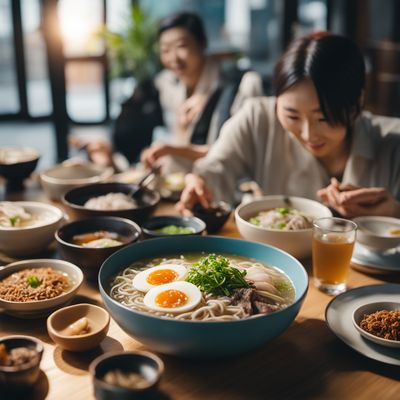
Naengmyeon
Cold buckwheat noodles soup
Naengmyeon is a Korean cold noodle dish that is perfect for hot summer days. The dish consists of thin, chewy noodles made from buckwheat, potato, or sweet potato starch,...

Nude-gimbap
Naked gimbap
Nude-gimbap is a Korean dish that is similar to sushi rolls. The dish is made with rice, vegetables, and meat or seafood, all wrapped in seaweed. The dish is called "nude"...
Korean cuisine recipes Browse all »

Korean-inspired Caesar Salad
Kimchi Caesar Salad: A Fusion of Flavors
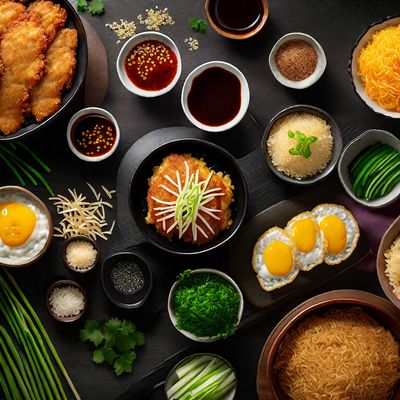
Korean-style Katsudon
Crispy Pork Cutlet with Korean Flavors

Korean-style Tarte Tatin
Kimchi-infused Tarte Tatin: A Fusion Delight
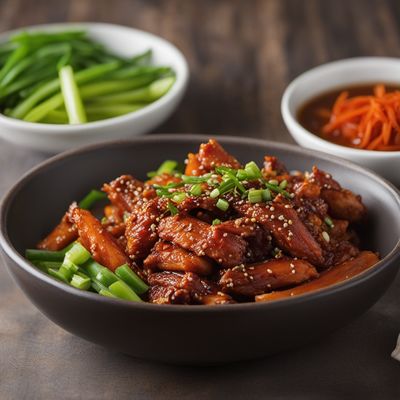
Andong Jjimdak with a Spicy Twist
Fiery Andong Jjimdak: A Spicy Korean Delight

Refreshing Mango Patbingsu
Tropical Delight: Mango Patbingsu - A Korean Summer Sensation

Korean-style Gulyás
Bulgogi Gulyás: A Fusion of Korean and Hungarian Flavors

Spicy Pork Soup with Rice - Dwaeji Gukbap
Fiery Delight: Spicy Pork Soup with Rice

Korean-style Couscous
Kimchi-infused Couscous with Gochujang Dressing

Grilled Korean Pork Ribs
Sizzling Sweet and Spicy Pork Delight

Bossam - Korean Braised Pork Belly Wraps
Savory Delight: Korean Bossam - Tender Braised Pork Belly Wraps

Gyeran-ppang (Korean Egg Bread)
Savory Egg-Stuffed Bread: A Korean Delight
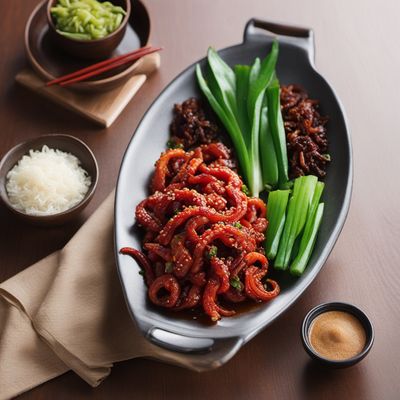
Spicy Stir-Fried Octopus
Fiery Octopus Delight